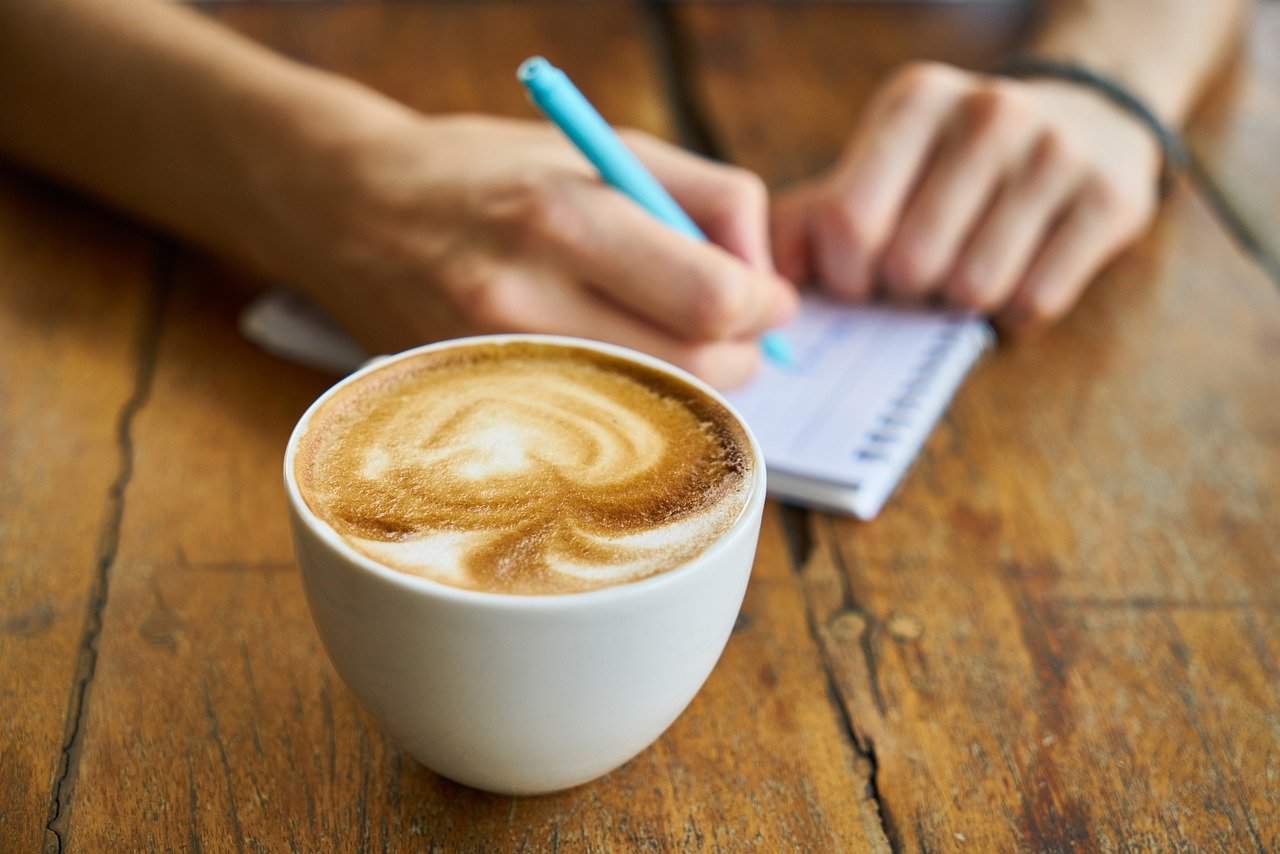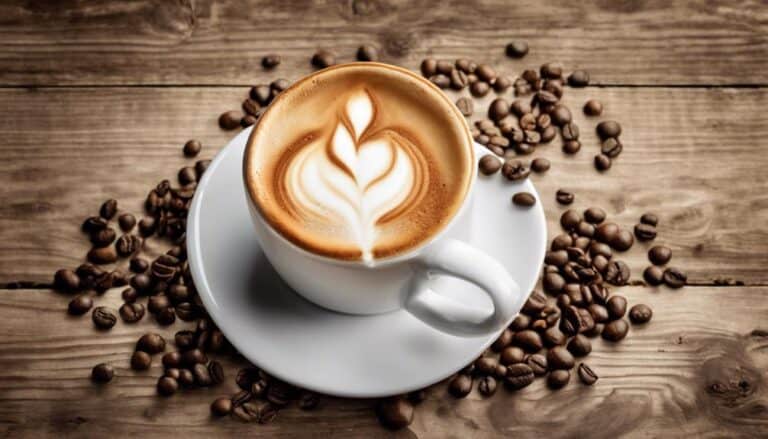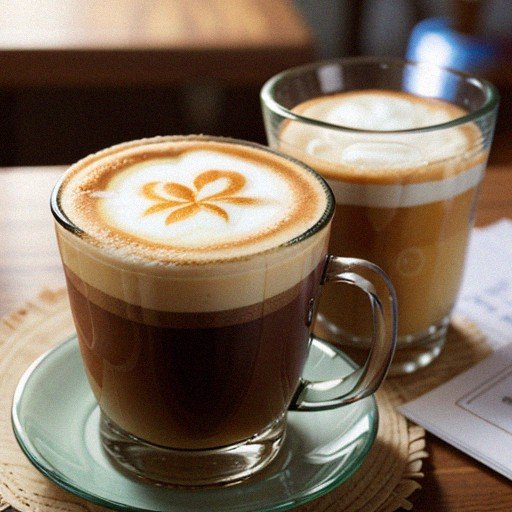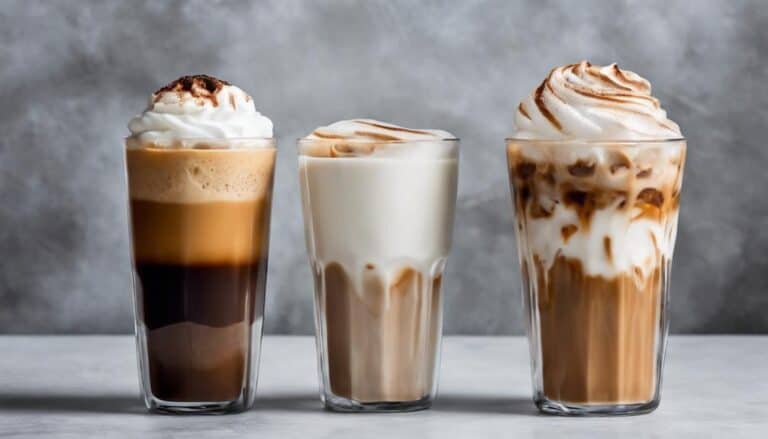Is There Coffee in Cappuccino? Exploring the Key Ingredients of this Classic Italian Beverage

Cappuccino is a popular coffee beverage that has been around for centuries. It is a staple in many coffee shops and cafes, and is enjoyed by millions of people around the world. However, there is some confusion about whether or not cappuccino contains coffee. In this article, we will explore the question “Is there coffee in cappuccino?” and provide a clear and concise answer.
To answer this question, we need to first understand what cappuccino is and what its main ingredients are. We will also look at the brewing process for cappuccino and how it differs from other coffee beverages. Additionally, we will examine the variations of cappuccino that exist and the nutritional information associated with this popular drink. Finally, we will discuss the caffeine content in cappuccino and its impact on our lifestyle.
Overall, this article will provide a comprehensive overview of cappuccino and answer the question of whether or not it contains coffee. By the end of this article, you will have a better understanding of cappuccino and its role in our daily lives.
Key Takeaways
- Cappuccino is a coffee beverage that contains espresso, steamed milk, and milk foam.
- The brewing process for cappuccino is different from other coffee beverages, and there are many variations of cappuccino available.
- Cappuccino contains caffeine, but the amount varies depending on the size and strength of the drink.
What is Cappuccino?
Cappuccino is a popular Italian coffee drink that is enjoyed all over the world. It is made by combining a shot of espresso with steamed milk and milk foam. The drink is typically served in a small cup and is known for its frothy milk foam on top.
The name “cappuccino” comes from the Capuchin order of friars, who wore brown hoods that resembled the color of the drink. The origins of the cappuccino can be traced back to Italy in the early 20th century, where it was first served in cafes in Trieste.
A traditional Italian cappuccino is made with equal parts espresso, steamed milk, and milk foam. The espresso is brewed using a machine that forces hot water through finely ground coffee beans at high pressure. The steamed milk is heated to around 150°F and then added to the espresso. Finally, the milk foam is added on top to create the signature frothy layer.
Italian cappuccinos are typically served in the morning and are considered a breakfast drink. They are often enjoyed alongside a pastry or other breakfast food. In Italy, it is considered inappropriate to drink a cappuccino after 11am.
Overall, cappuccinos are a delicious and popular coffee drink that can be enjoyed at any time of day. Whether you are looking for a morning pick-me-up or a mid-day treat, a cappuccino is a great choice.
Main Ingredients of Cappuccino
Cappuccino is a popular Italian coffee drink that is enjoyed all over the world. It is made up of three main ingredients: espresso, milk, and foam. In this section, we will discuss each of these ingredients in detail.
Espresso in Cappuccino
Espresso is a strong and concentrated coffee that is made by forcing hot water through finely ground coffee beans. It is the base of a cappuccino and provides the drink with its strong flavor. Espresso can be made using an espresso machine or a stovetop espresso maker.
Milk in Cappuccino
Milk is an essential ingredient in cappuccino. It is used to create the creamy texture of the drink. Whole milk is the most commonly used type of milk in cappuccinos, but you can also use skim milk, almond milk, or soy milk. The milk is steamed to create a velvety texture and to bring out its natural sweetness.
Additional Ingredients
In addition to espresso and milk, some cappuccinos may include additional ingredients. Sugar and cinnamon are common additions that can enhance the flavor of the drink. Some people also like to add flavored syrups to their cappuccinos for an extra burst of flavor.
Overall, cappuccino is a delicious and creamy coffee drink that is enjoyed by coffee lovers all over the world. Its simple ingredients and preparation make it easy to make at home or enjoy at your local coffee shop.
The Brewing Process
When making a cappuccino, the brewing process involves making a shot of espresso and steaming milk. To make the perfect cappuccino, you’ll need high-quality coffee beans, an espresso machine, filtered water, and a steam wand.
First, we need to prepare the espresso shot. We start by grinding our coffee beans to a fine consistency and then tamping them into the portafilter. We then place the portafilter into the espresso machine and start the brewing process. The machine forces hot water through the compacted coffee grounds, extracting the rich, concentrated espresso shot.
Next, we need to steam the milk. We begin by pouring cold milk into a pitcher and then inserting the steam wand into the milk. We turn on the steam wand, creating a vortex in the milk. The vortex helps to incorporate air into the milk, creating a frothy texture. We continue steaming the milk until it reaches the desired temperature and texture.
Once both the espresso shot and steamed milk are ready, we combine them to create the perfect cappuccino. We pour the espresso shot into a cup and then add the steamed milk, using a spoon to hold back the froth. We then spoon the froth on top of the milk to create a beautiful, layered cappuccino.
It’s important to note that the quality of the water used in the brewing process can greatly impact the taste of the cappuccino. Using filtered water ensures that the coffee’s flavors are not overpowered by any impurities in the water.
Overall, the brewing process for a cappuccino requires precision and attention to detail. With the right equipment and technique, you can create a delicious cappuccino that is sure to impress.
Cappuccino Vs Other Coffee Beverages
When it comes to coffee, there are many different types of beverages to choose from. In this section, we will compare cappuccino to some of the most popular coffee beverages, including latte, macchiato, flat white, americano, and brewed coffee.
Cappuccino Vs Latte
Both cappuccino and latte are espresso-based drinks that are popular all over the world. The main difference between the two is the amount of milk used. A latte has more milk than a cappuccino, which makes it creamier and smoother in texture. A cappuccino, on the other hand, has more foam than a latte, which gives it a lighter texture.
Cappuccino Vs Macchiato
A macchiato is a shot of espresso with a small amount of milk added. The milk is usually steamed and then added to the espresso, which creates a layered effect. The main difference between a macchiato and a cappuccino is the amount of milk used. A macchiato has less milk than a cappuccino, which makes it stronger and more intense in flavor.
Cappuccino Vs Flat White
A flat white is similar to a latte, but it has a higher concentration of espresso and less milk. The milk in a flat white is steamed and then added to the espresso, which creates a smooth and velvety texture. The main difference between a flat white and a cappuccino is the amount of foam used. A flat white has less foam than a cappuccino, which gives it a smoother texture.
Cappuccino Vs Americano
An americano is made by adding hot water to a shot of espresso. The main difference between an americano and a cappuccino is the amount of milk used. An americano has no milk, while a cappuccino has both milk and foam. This makes an americano stronger and more bitter in taste than a cappuccino.
Cappuccino Vs Brewed Coffee
Brewed coffee is made by pouring hot water over ground coffee beans. The main difference between brewed coffee and cappuccino is the method of preparation. Cappuccino is made using an espresso machine, while brewed coffee is made using a drip or pour-over method. Additionally, brewed coffee has a lower concentration of caffeine than cappuccino.
In conclusion, cappuccino is a unique and popular coffee beverage that has a distinct taste and texture. While it shares similarities with other espresso-based drinks, such as latte and macchiato, it also has its own unique characteristics that set it apart. Whether you prefer a creamy latte or a strong americano, there is a coffee beverage out there for everyone to enjoy.
Cappuccino Variations
Cappuccino is a classic Italian coffee beverage made with equal parts of espresso, steamed milk, and milk foam. However, as this traditional beverage has evolved over time, we have seen a number of notable regional differences. Here are some of the most popular cappuccino variations that you may come across:
Iced Cappuccino
Iced cappuccino is a refreshing twist on the classic hot beverage. It is made by brewing a shot of espresso over ice and topping it with cold milk foam. This variation is popular in the United States, especially during the summer months.
Frappuccino
Frappuccino is a blended coffee beverage that originated at Starbucks. It is made by blending coffee, milk, and ice, and then topped with whipped cream and flavored syrups. While not a true cappuccino, it is a popular variation that has become a staple at coffee shops around the world.
Nespresso Cappuccino
Nespresso is a popular brand of coffee machines that uses pre-packaged coffee pods. Nespresso cappuccino is made by brewing a shot of espresso using a Nespresso machine, and then adding steamed milk and milk foam. This variation is convenient and easy to make at home.
Starbucks Cappuccino
Starbucks is a popular coffee chain that has its own unique take on the classic cappuccino. Starbucks cappuccino is made with a double shot of espresso and topped with a thick layer of milk foam. It is a popular choice for coffee lovers who prefer a stronger, bolder flavor.
Italian Cappuccino
The Italian cappuccino is the traditional version of this classic coffee beverage. It is made with a single shot of espresso, steamed milk, and milk foam. This variation is typically served in a small ceramic cup and enjoyed as a morning beverage in Italy.
Keurig Cappuccino
Keurig is another popular brand of coffee machines that uses pre-packaged coffee pods. Keurig cappuccino is made by brewing a shot of espresso using a Keurig machine, and then adding steamed milk and milk foam. This variation is another convenient option for making cappuccino at home.
In conclusion, cappuccino is a classic coffee beverage that has evolved over time to include a variety of regional variations. Whether you prefer a classic Italian cappuccino or a trendy frappuccino, there is a cappuccino variation out there for everyone to enjoy.
Nutritional Information
When it comes to cappuccinos, one of the most common questions is, “Is there coffee in cappuccino?” The answer is yes, cappuccinos are made with espresso, which is a type of coffee. However, cappuccinos also contain milk and, depending on the recipe, may be topped with whipped cream or flavored syrups.
Let’s take a look at the nutritional information for a typical cappuccino. According to FatSecret, a serving size of 1 mug (8 fl oz) contains 74 calories. The breakdown of macronutrients is as follows:
- Total Fat: 3.98g
- Saturated Fat: 2.273g
- Trans Fat: 0g
- Polyunsaturated Fat: 0.241g
- Monounsaturated Fat: 1.007g
- Cholesterol: 12mg
- Sodium: 50mg
- Total Carbohydrate: 5.81g
- Dietary Fiber: 0.2g
- Sugars: 6.41g
- Protein: 3.47g
It’s worth noting that the nutritional information for cappuccinos can vary depending on the type of milk used and any additional ingredients. For example, a cappuccino made with skim milk will have fewer calories and less fat than one made with whole milk.
In terms of health benefits, cappuccinos made with milk can be a good source of calcium and potassium. According to NutritionValue.org, a serving of cappuccino contains 156mg of calcium and 240mg of potassium. However, it’s important to note that cappuccinos can also be high in saturated fat and sugar, especially if flavored syrups or whipped cream are added.
Overall, cappuccinos can be a tasty treat, but it’s important to enjoy them in moderation as part of a balanced diet. If you’re looking to reduce your calorie and fat intake, consider opting for a cappuccino made with skim milk or a non-dairy milk alternative.
Cappuccino and Lifestyle
Cappuccino is a popular coffee drink that is enjoyed by many people around the world. It is a great way to start your day and pairs well with breakfast pastries such as croissants, muffins, and scones. Many coffee chains offer cappuccinos on their menu, making it easy to grab on the go.
When it comes to preferences, cappuccinos are known for their rich taste and mild coffee flavor. They are made with a shot of espresso and steamed milk, which is then topped with foamed milk. The foam adds a creamy texture to the drink and can be used to create beautiful latte art by skilled baristas.
Cappuccinos are a great choice for those who enjoy a strong coffee flavor without the bitterness that can come with black coffee. The milk in a cappuccino helps to balance out the flavor of the espresso, making it a great option for those who are new to coffee or prefer a milder taste.
In terms of lifestyle, cappuccinos can be enjoyed by anyone. They are a great way to start your day or to enjoy as a mid-day pick-me-up. They can also be customized to fit your dietary needs by using alternative milk options such as almond, soy, or oat milk.
Overall, cappuccinos are a delicious and versatile coffee drink that can be enjoyed by anyone. Whether you prefer a rich and strong coffee flavor or a milder taste, cappuccinos are a great option for any coffee lover.
Caffeine Content in Cappuccino
Cappuccino is a classic Italian coffee drink that is made with espresso and steamed milk. It is a popular beverage worldwide, known for its rich and creamy taste. But does cappuccino have caffeine?
Yes, cappuccino does have caffeine. The amount of caffeine in a cappuccino can vary depending on how much espresso is used and how much milk is added. A single shot of espresso typically contains between 30-100 mg of caffeine. A single-shot cappuccino has 64 milligrams of caffeine, and a double-shot cappuccino has 128 milligrams of caffeine.
It is important to note that the amount of caffeine in a cappuccino is usually less than that in a cup of brewed coffee. This is because a cappuccino is made with a shot of espresso, which contains less caffeine than what you’d find in an 8 ounce cup of brewed coffee. However, the actual caffeine content of a cappuccino can vary depending on the barista’s technique, the type of coffee beans used, and the size of the drink.
If you are looking to reduce your caffeine intake, you may want to consider ordering a decaf cappuccino. Decaf cappuccinos are made with decaffeinated espresso, which contains only a small amount of caffeine. However, it is important to note that decaf coffee still contains some caffeine, so it may not be suitable for those who are highly sensitive to caffeine.
In summary, cappuccino does contain caffeine, but the amount can vary depending on several factors. If you are looking to reduce your caffeine intake, you may want to consider ordering a decaf cappuccino.






One Comment